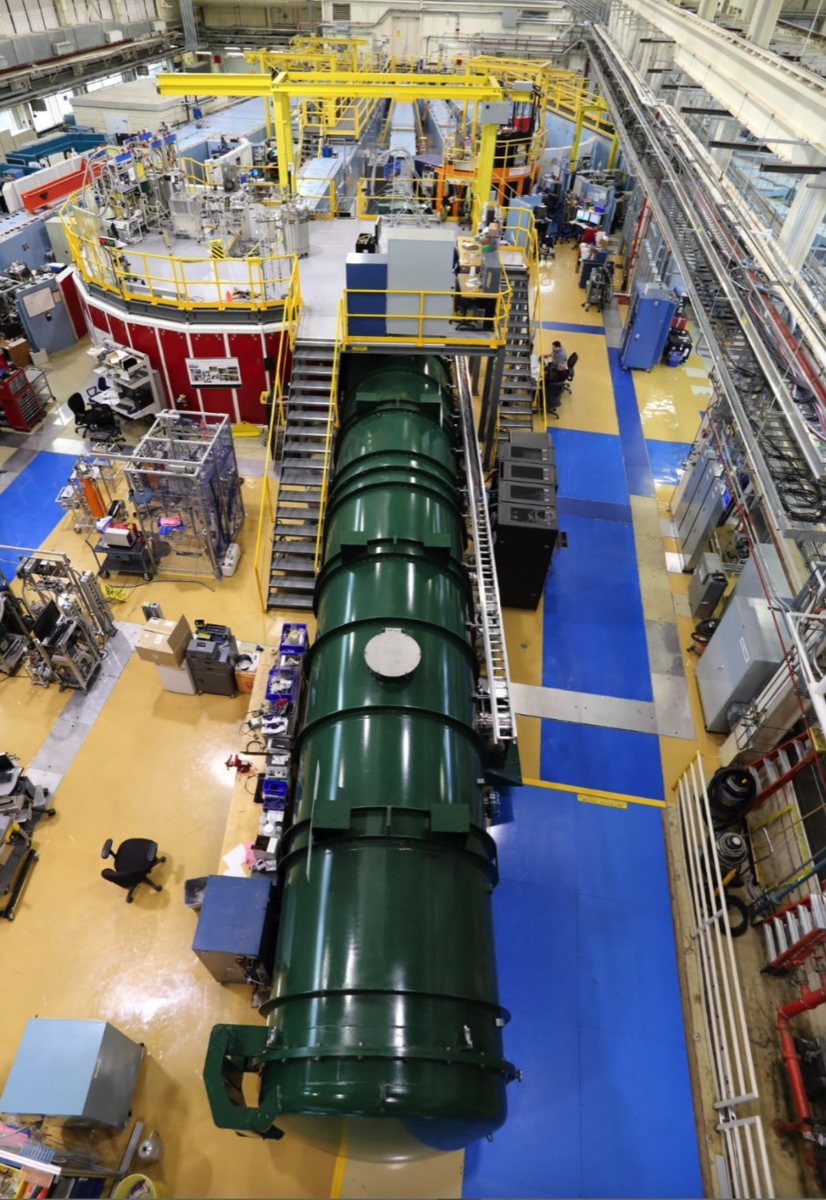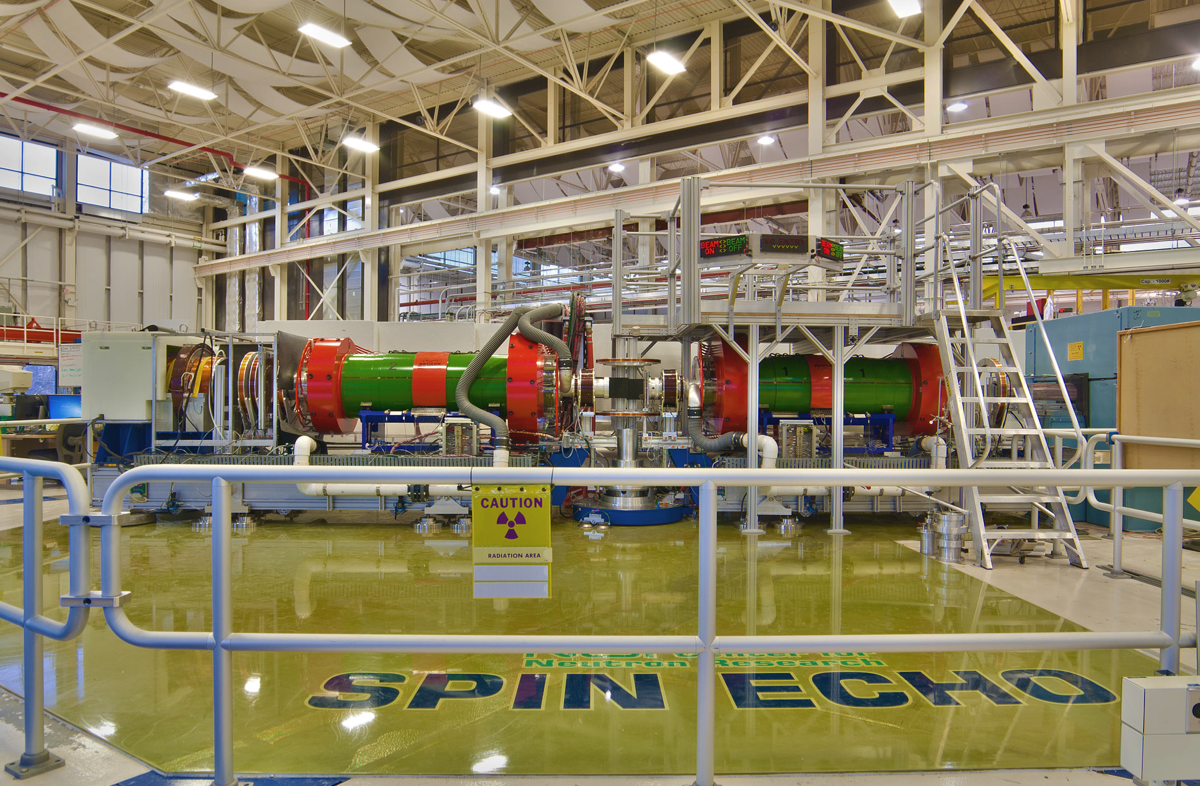Neutron scattering
Neutron scattering is used to probe both the structure and dynamics of the systems of interest as, for example, lipid vesicles or hydrated proteins. Among neutron scattering approaches, we currently use neutron reflectivity, small-angle neutron scattering, neutron spin-echo, and elastic & quasi-elastic neutron scattering. The neutron scattering investigations are carried out at some of the largest neutron scattering facilities worldwide, including the National Institute of Standards & Technology (USA), the Oak-Ridge National Laboratory (USA), the Paul Scherrer Institute (Switzerland), the Institute Laue-Langevin (France), the Rutherford Appleton Laboratory (UK), the Heinz-Maier-Leibnitz Zentrum (Germany), and the Australian Centre for Neutron Scattering (Australia).

Neutron reflectometry is one of the many neutron scattering techniques that we routinely use in our research. The instrument pictured in the figure is MAGIK, one of the neutron reflectometers installed at the Centre for Neutron Research at the National Institute of Standards and Technology, Maryland, USA (link), which we recently used to measure ionic liquid absorption in supported lipid bilayer. Along with MAGIK, we use the neutron reflectometer FIGARO installed at the Institute Laue-Langevin, Grenoble, France (link).

Small-angle neutron scattering (SANS) is another neutron technique that we routinely use in our research. The instrument pictured in the figure is one of the SANS machines installed at National Institute of Standards and Technology, Maryland, USA (link), which we recently used to determine the partitioning of ionic liquid (IL) cations between lipid vesicles and their aqueous solvent. The knowledge of IL-partitioning is necessary for the development of IL-based applications in pharmacology, bio-medicine and bio-nanotechnology.


Elastic & quasi-elastic neutron scattering is one of the many neutron scattering techniques that we routinely use. The instrument pictured in the top figure is the IN16B spectrometer installed at the Institute Laue-Langevin, Grenoble, France (link), which we recently used to measure dynamics in hydrated proteins and to test our new neutron spectroscopy method for dynamics. Along with IN16B, we routinely use other QENS spectrometers in many large-scale facilities worldwide, including: HFBS at the National Institute of Standards and Technology, Maryland, USA (link), pictured in the bottom figure, BASIS at the Oak-Ridge National Laboratory, Tennessee, USA (link), IRIS at the Rutherford Appleton Laboratory in the Oxfordshire, UK (link); FOCUS at the Paul Scherrer Institute, Villigen, Switzerland (link); SPHERES at the Heinz-Maier-Leibnitz Zentrum, Munich, Germany (link).

Neutron spin-echo spectroscopy is one of the many neutron scattering techniques that we routinely use. The instrument pictured in the figure is the Neutron Spin-Echo spectrometer installed at the Centre for Neutron Research at the National Institute of Standards and Technology, Maryland, USA (link), which we have recently used to measure how ionic liquids alter the bending elasticity of lipid vesicles that are now well known to the general public for their use as nano-carriers in the mRNA-based Covid-19 vaccine formulations.